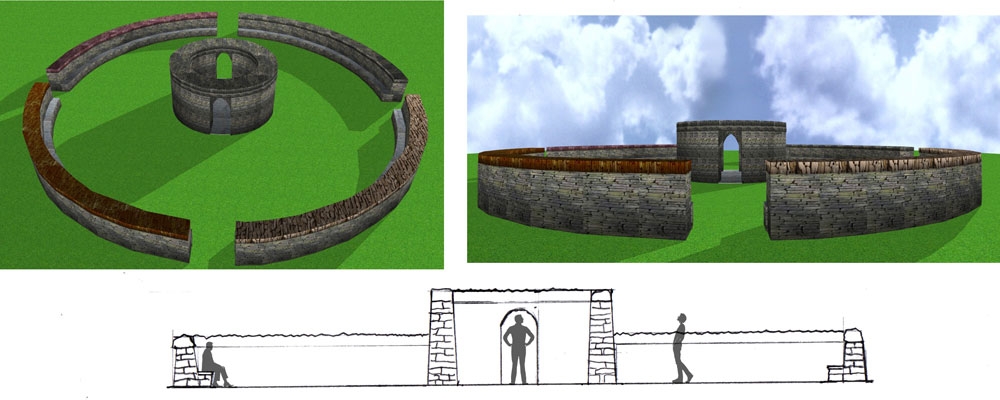CREDITS
There are many many people the DSWAI wishes to thank from deep in their hearts.
Those people are:
The builders
Padraig Larkin, Christian Helling, Ronan Crehan, Louise Price, Oisin Price, Eddie Farrelly, Nick Aitken, Sean Adcock, Sunny Wieler, Ken Curran, Joanna Williams, Lucy Warmington, Barry & Jacob Noyce, Frank Gleeson, Eamonn Carthy, Thomas Donnelly, Cait Fealty, Caitriona Fealty, Tom Parkin, Michele Carini, Richard Schrade, Victor Daly, Waldemar Wower, Fran Coady, Damian Williams, Karl Kennedy, Sandro Cafolla, Dariusz Jurkiewicz, Seamus May, Mark O'Loughlin, Malachy Sheehan, Helmut Schneider, Alex Panteleyenko, Charlie McFadden, Scott Hyslop, Shaun McFadden, Anne Holland, Simon Hickey, Lynne Hoare, Herbert O'Toole, Liam Friel and Liam Walsh
Stone Carvers
Julia Gebel (Leinster), Christian Helling (Connacht), Victor Daly (Munster), Alex Pantelejenko (Ulster).
The organising committee
Nick Aitken, Tomas Lipps, Sunny Wieler, Eddie Farrelly, Ronan Crehan, Alex Panteleyenko, Ken Curran and Francis Coady
For contributing the Emigrant Stones and writing Whispering Stones
Bobby Watt (Gem Cambell)
For making sure the Emigrant Stones got to Montreal from Ottawa
Danny Brennan and Pat Kelly.
For getting the Emigrant Stones across the Atlantic.
John Lyons (Irish Shipping & Transport)
To all those who donated stone to the project:
Mick Kelly (a proud Connacht man from Roscommon living in nearby Kilcormac) for the many tons of Connacht limestone he hand-picked and delivered to us.
Rodger Deegan for the hours and hours of work he has (and continues to) put in to the project, plus the huge volumes of stone he donated. We could not have done it without him.
Niall and Michael at McKeon Stone in Stradbally for the beautiful dimension stone which will form part of the arches and building stone in the central feature as well as to be used in seating areas.
McMonagles from Mountcharles in Donegal. For supplying the quartzite used in the Ulster wall.
For donating a truck load of Sandstone for the Ulster wall Drimkeelin Sandstone from Donegal.
David O'Connor of Liscannor Flagstone for donating building stone and those wonderful slabs of Liscannor to be used as further seating areas.
Joe Molloy (local farmer) for donating the fine Boora limestone from his farm.
The Sculpture Parklands staff/Bord na Mona, Thomas Egan, Rodger Deegan, Don O'Boyle, PJ and Mick Connelly. For believing in the concept, for their continuing support and enthusiasm through the grounds staff. For preparing the site so well and providing facilities for people over the weekend. Also, for excavating so many tons of lovely blue limestone used throughout the project.
Don O'Boyle for making the profiles and scaffolding and any other steel works we required.
Pat Dooley for hunting high and low in search of stone for the project. Many thanks Pat.
Tony Maher of Maher Stone Stradbally for donating (and delivering) the bags of lovely green Sandstone.
DSWA North Wales Branch for donating the Holyhead Breakwater Quarry Stone and the Ffestiniog Railway Sleeper Stone.
Kilkenny Blue limestone for giving us as small bit of their waste off-cuts.
To those who helped with transport
Thanks to Donal from Roscrea Express for moving stone for the association 'free of charge'.
Thanks to Pauric and Enda Meehan of Meehan Brothers for hauling all that stone down from Donegal (close to 50 tons!).
Rodge Deegan and Mick Connolly of Bord na Mona for hauling all that stone from Cadamstown to the site.
To Bord na Mona themselves for moving the Boora stone from Jo Molloy's farm and from various locations including McKeons in Stradbally as well other places locally to the site.
To those in the media who helped with promoting the event
Karen O'Grady from the Midland Tribune
Caitriona, Fegrus, Derek, and all on RTE Radio 1's The Mooney Show.
Rebecca Kelly and the Irish Hospice Foundation for inviting us to be a part of their book on gathering events.
All the other unsung heroes
Thanks to Paul and all at Brix Workwear for donating our safety gear.
Thanks to Banagher Concrete for saving our lives with the heavy gauge re-inforcing bars to make our profiles for the inner valette.
Many thanks to Tom Parkin, Tori and Cristine for running the shop, meeting the public and being the information point for people.
Thanks a million for Tori for looking after the catering.
Thanks to Barry Bryan for cooking and serving the lunches.
A big thanks to Sean Corrigan (Corrigan's Bar, Ferbane) for bringing us water, drinks, snacks and lots of delph and cutlery for serving the food onto.
Tomas & Stone Foundation (development of the concept early days, design of the logos and imagery as well as the t-shirts). Tomas has offered advice on event management throughout.
Sean Adcock for technical support and advice behind the scenes. Also, a key person in final setting out and building of the central feature.



